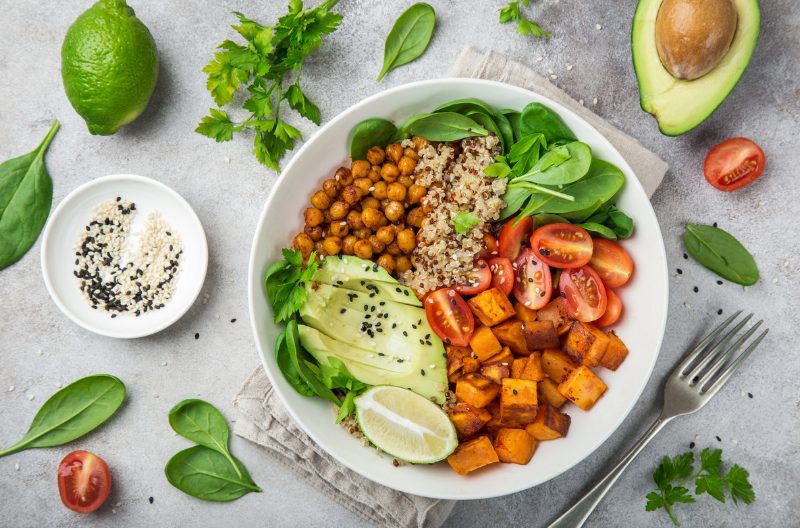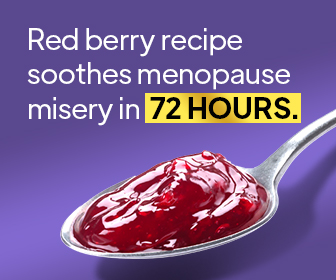Plant-based diets are growing increasingly popular every year. Even Beyoncé started talking about going vegan this year and wore a sweatshirt emblazoned with the word “KALE” in her video for “7/11.” And Beyoncé isn’t the only one. Vegans, vegetarians, flexitarians, and Meatless Mondays are just a few of the options out there! We hear about it all the time now.
So, is it really worth it? We had so many questions ourselves, so we decided to investigate. Is a plant-based diet enough to eat? How is it different from being vegan or vegetarian? Does it mean that we have to give up all our favorite foods and start eating kelp? Or kale? Or whatever it is? And, isn’t all of this expensive?
We have the answer to all of these questions and more. Below, we’ll give you all the handy tips and steps you need to get you started. So grab your green drink or coffee, and take notes! Let’s dive deep into the topic of plant-based diets on a budget.
What Is a Whole Food Plant-Based Diet?
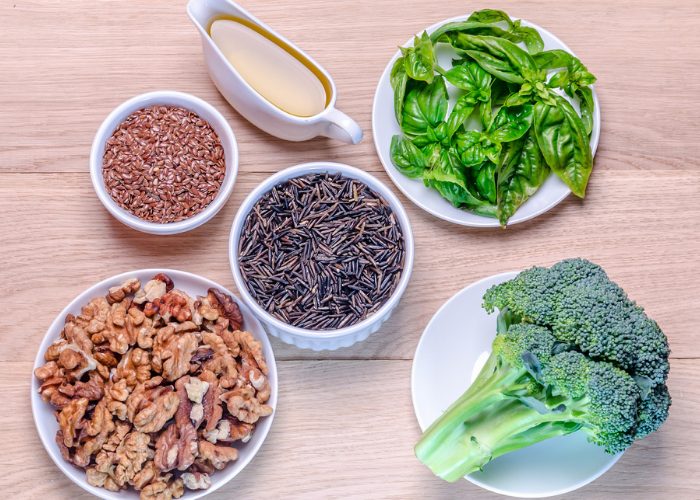
The primary aim of the plant-based diet is to maximize the consumption of nutrient-dense plant foods while minimizing processed foods, added sugars, oils, and animal-based foods.[1] It seeks the most nutritious whole foods of the things we eat every day. And this advice comes backed by science.
According to the 2015 U.S. Dietary Guidelines, higher intake of red and processed meats is detrimental to health.[2] Sugar-sweetened foods and beverages, as well as refined grains, were equally detrimental.[3] The problem with the Standard American Diet — which is made up of meat and potatoes, fried foods and saturated fats, and processed fast foods — is that it is high in all of the most harmful things.
Since the 1970s, Americans have started to take note. They now eat less red meat, refined sugar, and potatoes than before. Instead, they consume more chicken, rice, and yogurt.[4]
Here are some basic rules to a whole food plant-based diet:
- Eat fresh. No processed foods. The diet plan emphasizes foods that come from the source, rather than being processed.[5] So, for example, eating whole fresh fruits instead of drinking fruit juices. Or enjoying brown rice and quinoa instead of heavily-processed white rice.
- Red meat is a no-no. Meat and dairy products are allowed in a plant-based diet. However, this refers to fish and poultry, with just 1-2 servings of milk and dairy per day.[6] Red meat is out.
- Potatoes are two-faced. Potatoes that are baked, roasted, boiled or mashed are great. But avoid fried or processed potatoes, which includes potato chips!
- Whole grain breads are welcome. Have you tried Ezekiel bread? It’s sprouted grain bread that contains a multitude of health benefits and is great for sandwiches or toast in the morning. Processed grains and breads should be avoided on this diet.
What you should eat
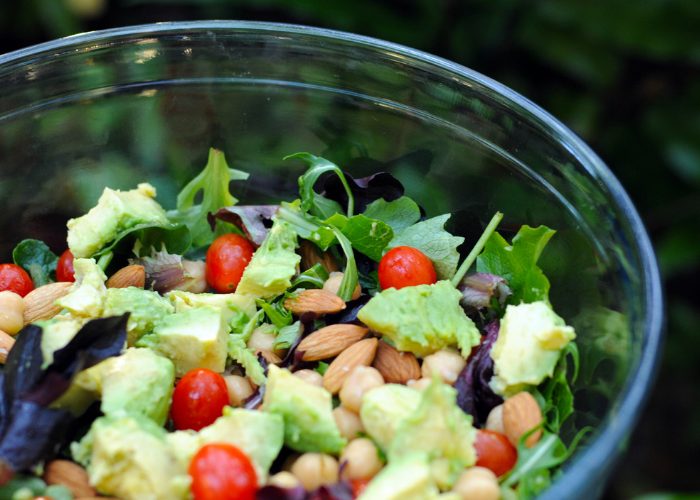
The diet is basically wide open to eating all the whole foods and plant-based proteins you can find. This includes:
- Fresh fruit and vegetables
- Whole, unprocessed grains (from the bulk bin, if available)
- Legumes
- Tubers (but not white potatoes)
- Chicken, fish, and seafood (3-4 times a week)
- 1-2 glasses of milk per day
- Fresh or whole spices, herbs, and seasonings (basil, rosemary, turmeric, ginger, curry, cumin, black pepper, salt, etc.)
- Whole food condiments (salsa, mustard, nutritional yeast, soy sauce, vinegar, lemon juice)
- Whole, plant-based protein (tofu, tempeh, plant-based protein sources or powders with no added sugar or artificial ingredients)
- Plant-based milks (soy, almond, cashew, coconut, hemp and rice milks, etc.)
What you shouldn’t eat
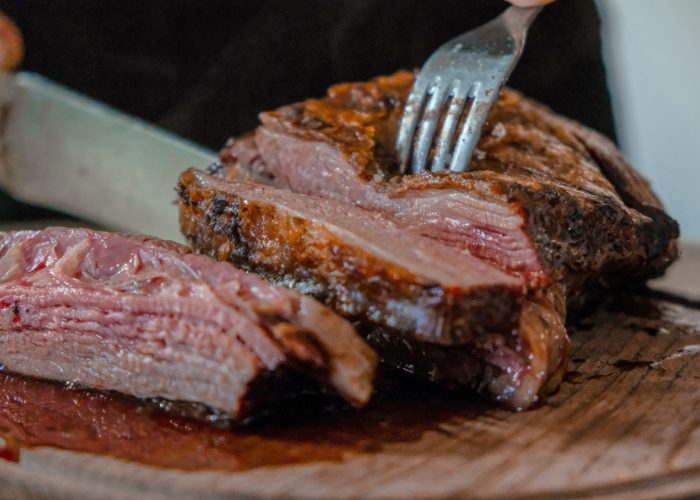
The list of foods that are restricted on a plant-based diet is short but succinct.
- Animal products, especially red meat, eggs, and most dairy
- Added fats and sugars
- Processed and artificial foods, including vegan or vegetarian substitutes for meat, cheese, and dairy products
- Snack bars, energy bars, and candy bars
- Soda, fruit juice, commercial coffee, and tea drinks
Remember, incorporating more plants – veggies, fruit, and whole grains — into your daily diet does not mean changing everything right away. It means introducing more whole fresh vegetables, fruit, grains and legumes into all of your meals.
Comparison to similar diets, i.e. veganism and flexitarian
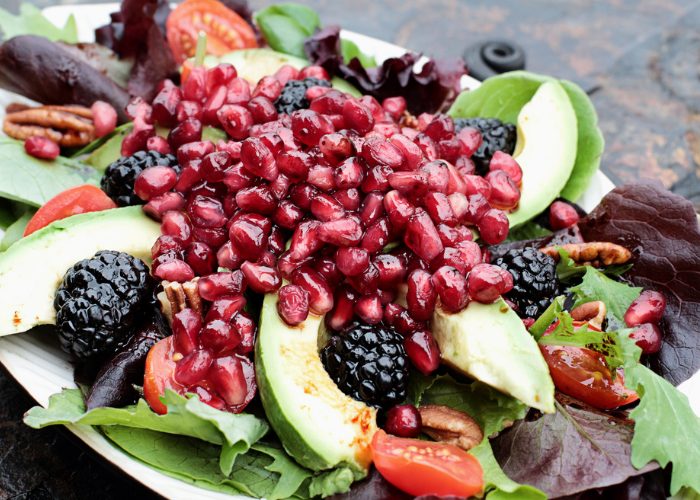
So how is this different from vegetarianism, veganism, or flexitarianism? For starters, vegetarians eat no meat but do eat dairy products and honey. Vegans eat absolutely no meat, dairy or animal products. Flexitarians incorporate plant-based meals into their diets but without the same level of consistency or commitment.
While flexitarians eat lean red meat regularly, the plant-based diet does not. In particular, the plant-based diet eventually swaps its meat offerings to plant-based options.
These are the technical differences between these diets. But why choose this diet over any of these others?
With vegetarianism or veganism, there remain a lot of unhealthy options. They may eat fried foods like French fries, meat replacements like veggie burgers, or processed foods like white bread and pasta or fruit juices, all as long as they contain no meat or dairy products.
Similarly, on a flexitarian diet, there is still a fairly large and consistent consumption of red meat and other animal proteins.
But the plant-based diet seeks to truly limit the intake of meat products to just a few servings of fish and poultry per week. Furthermore, it contains no processed foods, and no artificial flavors or colors, therefore no fake meat or dairy substitutes, and no white bread or white sugar.
Instead, it supports a refrigerator full of fresh options, and a pantry loaded with dry goods in their whole, unprocessed form. This is truly one of the healthiest lifestyle diets being explored today.
Fad or a Fresh Approach to Dieting?
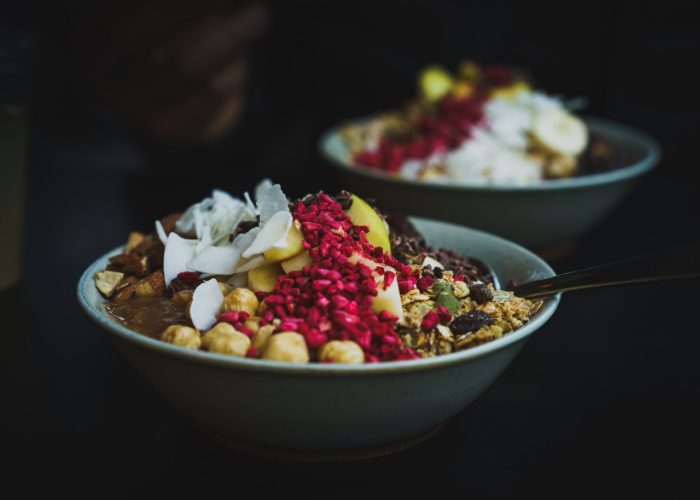
But is this all a fad? Is this just another designer diet that Gwyneth Paltrow can talk about on her website or in a new cookbook? Face it, fad diets are the “one-hit wonders” of food. They come and go. Recently, we’ve heard of the cabbage soup diet, the banana diet, the cookie diet, the baby food diet, the grapefruit diet, and the purple diet.
Fad diets are often overly restrictive to a dangerous extent and are based around unusual food choices. And, typically, they cut out huge groups of food in an effort to promote better health, longer life, or very quick weight loss.
But the plant-based diet is different. The reason it is even called a “diet” is because it restricts food that has become very commonplace in the standard American diet, like fast food, junk food, and overprocessed food. It also relies on specific foods, rather than just “eating healthy,” and provides a scientific basis for its brand of the fresh approach to eating.
In fact, Canada’s 2018 health guidelines favor a plant-based diet.[7] Canada has national health care coverage, so the government does not want to pay for unnecessary illness and healthcare. Thus, Canada has encouraged a plant-based diet for the health of its citizens.
Included in Canada’s 2018 food guide are more fresh vegetables and fruits, whole grains, “meat and alternatives” (e.g. tofu, beans, legumes, nuts, fish, poultry, lean meat), and “dairy and alternatives”. The food guide does not include any processed foods, sugar, and grains.[8]
In the U.S., the number of people identifying as vegan rose 600 times, from 1% in 2014 to 6% in 2017.[9] And interventional studies of plant-based diets in the U.S. have shown a full 90% reduction in angina attacks within just a few weeks.[10]
Key Benefits of Whole Food Plant-Based Diets
Risk of obesity, diabetes, hypertension, and cardiovascular disease is strongly linked to lifestyle, especially dietary choices.[11] Healthy eating can be best achieved with a plant-based diet, with more whole, plant-based foods and less or no meats, dairy products, and eggs and no refined and processed foods.[12] Here’s what science has to say about the benefits of this diet.
Controls diabetes
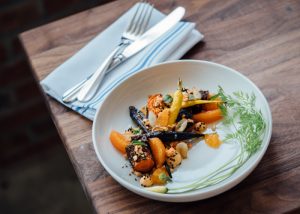
A plant-based diet discourages insulin resistance. If you are a type-2 diabetic, eating more whole foods from plants will help you regulate your insulin better and control your diabetes.[13]
And, a diet comprised of plant foods can be highly effective in preventing, treating, and even reversing type 2 diabetes. A study of 61,000 people found that type-2 diabetes decreased in a step-wise pattern with each reduction in animal proteins from their diets: from 7.6% of the participants who were omnivores, to 6.1% of semi-vegetarians, to 3.2% to Lacto-ovo vegetarians who had diabetes.[14]
Another study over 17 years showed that eating meat even once a week increased the risk of type-2 diabetes by 74%.[15] In fact, adherence to a plant-based eating plan consisting of legumes, whole grains, vegetables, fruit, and nuts is actually protective against diabetes.
If you’re a diabetic who is considering how to healthily lose weight, be sure to check out our weight loss guide specifically for diabetics.
Treats obesity
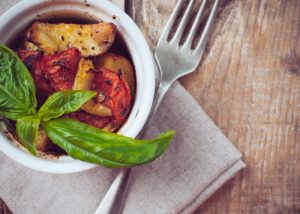
In 2011, the rate of obesity in cities across the U.S. was 39% and is increasing at a rate of 5% per year.[16] Obesity carries with it many other life-threatening diseases, including diabetes, heart attacks, high blood pressure, depression, and high cholesterol. The costs associated with healthcare for obesity-related lifestyle choices exceeds $1,400 per year more than the costs for a normal-weight person.[17]
Both clinical trials and observational research show that plant-based eating prevents weight gain and obesity, and promotes weight loss.[18] According to the American Healthy Eating Index, eating more whole, plant-based foods for weight loss can improve diet quality in a way not seen with traditional, energy-restricted diet approaches.[19] But this is true not just of restrictive dieting, but also of recommendations such as the American Diabetes Association.[20]
Interestingly, even without strict compliance with a solid plant-based diet, participants realized weight loss and weight management.[21]
Reduces risk of cancer
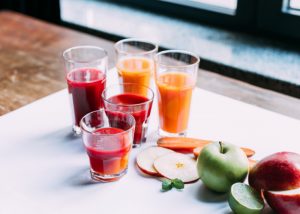
Plant foods such as fruits and vegetables reduce the risk of cancer diagnosis and recurrence, due to the fiber, antioxidants and other phytochemicals they contain.[22] Additional research also links the consumption of meat, especially red and processed meats, to the increased risk of several types of cancer.[23] The National Cancer Institute calls red meat a carcinogen.[24]
In contrast, a joint report by the World Cancer Research Fund and the American Institute for Cancer Research (AICR) points out that a diet consisting of whole grains, fruits, vegetables, and pulses will help to reduce the risk of cancer.[25] In fact, the AICR recommends that at least 2/3 of your plate is made up of plant foods.[26]
Good for the environment
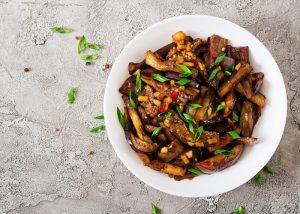
It is well known that food choices are strong determinants of human health, but recently awareness has grown about the fact that foods and beverages that we consume significantly affect the environment.[27] Plant-based diets often emerge as nutritionally and environmentally superior for both our health and the environment.
Reducing the meat and dairy consumption from the traditional Western diet for a plant-based pattern would cause a 70% reduction in greenhouse gas emissions and 50% less water use.[28]
In the UK, plant-based, or vegan, diets need just one-third of the fertile land, fresh water, and energy of the typical British “meat-and-dairy” based diet.[29] Meat and dairy are the leading contributors to greenhouse (GHG) emissions.[30] Reducing animal-based foods and choosing a wide range of plant foods can be beneficial to the planet and our health.
These figures are mirrored in the United States. The consumption of beef and dairy products is the largest driver of food-borne greenhouse gas emissions, water use, and land occupation in the US diet.[31] Vegetarian and vegan diets reduce food-borne greenhouse gas emissions by 32% and 67%, respectively, blue water use by about 70% each, and land occupation by about 75% each.[32]
Plant-based proteins
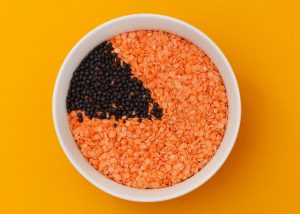
Plant sources of protein have the benefit of being truly low fat in many cases (e.g. most legumes). In addition, they supply fiber and phytonutrients, all of which are lacking in animal foods and are deficient in the average American diet.[33]
Animal sources of protein, despite providing a complete protein and numerous vitamins and minerals, have health professionals concerned about the saturated fat these foods contain compared to vegetable sources.[34] Plant proteins are typically not complete proteins, meaning they do not provide the essential amino acids for us to break down the protein and synthesize it in our bodies.
However, buckwheat and quinoa are complete proteins, and other plant-based combinations can provide complete proteins for the same value of protein as meat, but without any of the health concerns now associated with it.
Common Myths & Facts
Although we know the benefits of a plant-based lifestyle, we still have doubts. Read on for some ways to dispel the myths and mysticism that surrounds the most simple and central diet in the world.
1. Lack of sufficient proteins, vitamins, and nutrients
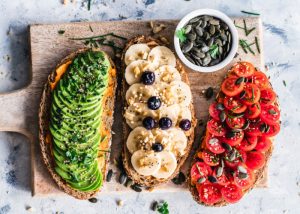
In spite of restricting entire food groups, a plant-based plan still provides the nutrition your body needs. But it is important to make sure that you eat a balanced meal at every meal.
Below is a list of vitamins and nutrients and the ways to get them through plant-based foods.[35]
| Vitamin/Nutrient | Recommended intake per day | Where to get it |
| Protein | 46g | · Lentils: 1 cup = 31 grams · Tofu: 1 cup = 27 grams · You can also supplement your diet with plant-based protein powders. |
| Iron | 18mg if you are menstruating, 8mg if you are menopausal | · Boiled spinach: 1 cup = 6.5 mg · Dried fruits and nuts (trail mix): 1 cup = 4.6 mg |
| Selenium | 55mcg | · 2 Brazil nuts = 55mcg of selenium |
| Zinc | 40mg | · 100 g of sesame or pumpkin seeds = 10 mg of zinc |
| Iodine | 150mcg | · 1/2 – 3/4 tsp of iodized salt = 150 mcg of iodine[36] |
| Vitamin D | 600 IU | · Hemp milk: 1 cup = 150 IU · Soy milk: 1 cup = 120 IU · Portobello mushrooms: 1 cup = 634 IU |
| Omega-3 fatty acids | 0.250g of EPA plus DHA for adult males and non-pregnant/non-lactating adult females. A minimum intake of 0.3 g/d EPA+DHA (of which at least 0.2 g/d should be DHA) for adult pregnant and lactating females. [37] | · ¼ cup of walnuts, chia, or flax seeds provides 100% of ALA. · 2 ½ oz of cooked mackerel, mussels, salmon, trout, or tuna, provides your daily needs of EPA/DHA. · Include at least 2-3 servings of fish in your weekly meal plans. |
| Calcium | 1200mg | · Boiled collard greens: 1 cup = 268 mg · Spinach: 1 cup = 245 mg · Soybeans: 1 cup = 261 mg |
| Vitamin B12 | 2.4mcg | · Sardines: 1 cup = 4.8 mcg[38] · 2 Tbsp of nutritional yeast = 3.1 mcg[39] |
2. It’s bland and boring
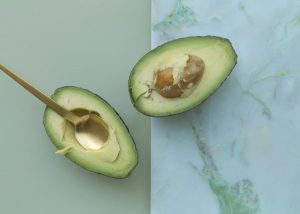
When your palate is used to the intense sweetness of too much sugar in soda or juice, or the heavily saturated and salty fried foods of a drive-through, it may be difficult to imagine anything worse than brown rice, pinto beans and kale with sesame seeds. But adding to the staple necessities of your store of fruits, vegetables, whole grains, and legumes is the vitality provided by spices and cooking methods.
A whole food plant-based diet still allows for creamy sauces from nut butters and plant milks, as well as global flavorings with tomatoes, garlic, onions, herbs, and spices that help transform your food into something worth sharing.
And remember that starting slowly by incorporating healthy options like a side salad and nutrient-rich black currants for dessert is the best place to start. Consistency is the key to making any change in diet and lifestyle into a permanent decision for your good health. So, buy more than just one nectarine or one prepared salad. Keep them on hand for every meal and allow them to invade your space a little more each week or each month.
Tip: Consume vitamin C with your plant-based iron food for better absorption. Try a salad with nuts, peppers, and a citrus-based salad dressing to get your daily recommended intake of iron and vitamin C!
3. I’ll be hungry all the time

Restricting red meat, processed foods and sugar does not mean restricting intake. You will still eat the same portions or possibly more than you have eaten up until now.
Whole foods are dense in nutrients but less dense in calories. So, predictably, you will be able to eat more food. Snacks in between meals are also more readily available with lightly salted veggie sticks and some nuts.
But, note that fiber fills you up and keeps you feeling satisfied for longer.[40] Because it is so nutrient-dense you will gain more energy and won’t feel tired when you start to eat more fiber.
4. It’s expensive
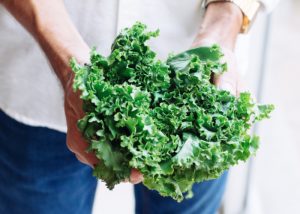
Convenience foods are so cheap. Who can beat a $5 lunch, or 2 huge burgers for $6? Truthfully, this can. A whole food plant-based diet doesn’t rely on overpriced, name-brand meat alternatives, pre-packaged processed foods, or fast foods.
Instead, you can find many inexpensive ingredients. For example, a 1 pound bag of dried garbanzo beans for $6.00,[41] a $2.42 bag of brown rice,[42] and a 1 Lb bag of carrots for $0.82.[43] Each of these will last you for at least two full servings for a family of 4. This means that you will need less than $10.00 to make at least eight meals. That is cheaper than two burgers for $6.
One very important thing to consider is that a meat-and-potato diet often considers fruit and vegetables as luxury add-on items. It treats them as unnecessary, and thus, they are an additional expense. But when you replace meat with the much more cost-efficient plant-based proteins, you can actually save money.
Furthermore, although this diet approach often accompanies an organic ideal, that is not necessarily the case. If you buy your produce from local farmers or farmer’s markets, you can ask them if they use chemical, natural or organic pesticides. Often, they follow natural or organic guidelines that are not “certified organic” but are still not chemical or toxic. That way, you don’t need to pay so much more for the “certified organic” produce at an expensive health food store.
And lastly, the savings reaped by good health and reduced sickness is cost-effective. Better overall health, both now and in the long run, saves you money on doctor bills, prescriptions, and medical management.
How to Be Plant-Based on a Budget
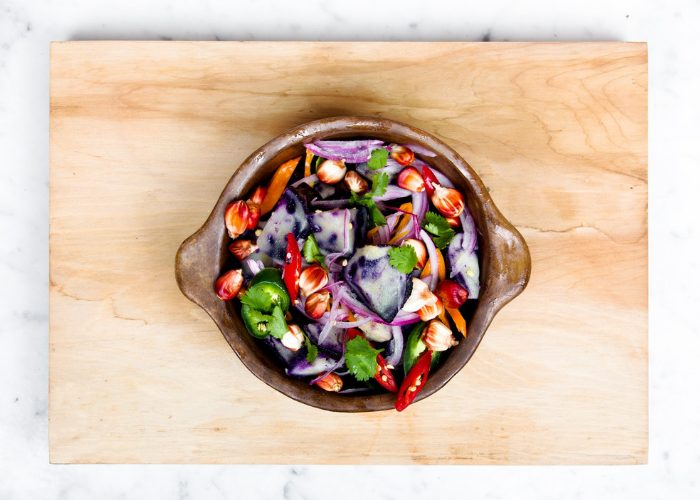
Getting started means taking a few extra minutes in the grocery store produce section and selecting a few new things to try. Making a rice bowl for lunch, a minestrone with barley instead of noodles, or a vegetarian chili with pinto beans and sweet potatoes are all meals that are so good, you won’t notice the difference. But it takes some planning and preparation.
And if you start by cooking plant-based meals, once or twice a week, you will begin to grow your pantry and your catalog of new recipes that utilize plant sources for all of your meals. Start by making a plant-based meal and try to do it once per week. Then, consider a plant-based day by eating all your favorite plant-based meals in one day.
Steps for Starting a Plant-Based Diet
- Cook one plant-based recipe a week. Look up vegetarian/vegan alternatives for your favorite foods. Instead of grilling up a meaty cheeseburger on Friday night, try a lentil burger instead. Love a good curry? Swap out the meat in your normal curry recipe with chickpeas. Search Pinterest and Reddit for ideas by using the hashtag #meatlessmonday. Don’t be afraid to experiment!
- Eat more fruits and vegetables. Increase your fruit and vegetable servings by one serving (1/2 cup) every day. Generally, 2-4 servings of fruits a day is optimal, and as many vegetables as you want.[44] You can easily include more fruit into your diet as snacks, desserts, or making homemade smoothies. Try a new fruit or vegetable every week to keep things interesting!
- Make healthy swaps. A simple swap would be to replace refined grains (e.g. white rice) with whole grains (e.g. brown rice). You can also use lentils or soy mince in dishes where you would normally use minced meats.
- Prep for 1 mealtime a week. Instead of prepping breakfast, lunch, and dinner for the whole week from the get-go, choose just 1 mealtime to start. This will get you into the habit of planning, shopping for, and preparing plant-based meals. If you’re short on time, you can use a meal prep service and specify your new diet preferences.
- Ask for a side salad instead of fries. When you’re eating out, order a side of grilled vegetables or green salad with your main, instead of your regular fries or onion rings. The price is the same, but you’ll be much healthier!
- Make sure you have at least one fruit or vegetable with every meal. Add spinach to your omelet in the mornings. Order a salad as an appetizer for lunch. Have a side of vegetables for dinner or a fresh fruit Macedonia as dessert.
7 Tips on How to Be Plant-Based on a Budget
- Plan your meals. Make a list of the ingredients you will need for your weekly meal plan. Remember to be thorough, and to buy only what you need. Plan to buy in bulk, to have proper portion controls, and minimize waste by bringing your own containers and jars to reuse.
- Make a shopping list. Write a shopping list that includes more whole grains, legumes, fruits, veggies, and nuts. More importantly, stick to the list!
- Buy in bulk. Get whole grains, legumes, nuts and seed, and even honey and olive oil from the bulk section of the grocery store or co-op. You can also buy fresh foods in bulk at the farmer’s market, and freeze them for future use.
- Shop local. Get vegetables and fruit from the local farmer’s market. If you go towards the end of the day, you can sometimes buy cases of fruits and veggies for a discounted price, then freeze them or make a huge pot of soup or a batch of jam. You can also share with your neighbors or friends!
- Allocate your budget. Spend 50% of your budget on whole, fresh produce, 20% on staples like legumes and grains, 10% on milk and plant proteins (tofu, tempeh), and 20% on nuts, seeds, spices, and dried fruits.
- Buy the right kind of frozen foods. Consider buying frozen veggies and fruit on sale. Fruits and vegetables are flash-frozen to lock in flavor and nutrients to the extent they are equal in nutritional value to fresh produce and have no additives or preservatives.[45] They can last up to six months in your freezer.
- Save the scraps. Keep vegetable scraps in a bag in the freezer to make your own vegetable broth. Use the broth as a soup base or to cook your grains or legumes
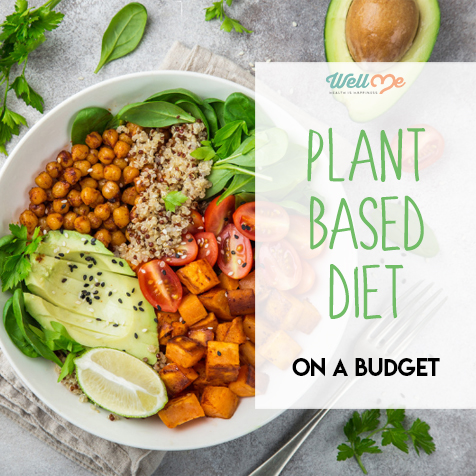
Conclusion
Learning how to eat a healthier, plant-sourced diet is definitely budget-friendly. It can save you time and money right now by preparing better meals, and in the future by living with better health.
References
- [1] https://www.thepermanentejournal.org/files/Winter2015/ArteryDisease.pdf
- [2] https://health.gov/dietaryguidelines/2015-scientific-report/PDFs/Scientific-Report-of-the-2015-Dietary-Guidelines-Advisory-Committee.pdf
- [3] https://health.gov/dietaryguidelines/2015-scientific-report/PDFs/Scientific-Report-of-the-2015-Dietary-Guidelines-Advisory-Committee.pdf
- [4] http://www.pewresearch.org/fact-tank/2016/12/13/whats-on-your-table-how-americas-diet-has-changed-over-the-decades/
- [5] https://www.health.harvard.edu/staying-healthy/the-right-plant-based-diet-for-you
- [6] https://www.health.harvard.edu/staying-healthy/the-right-plant-based-diet-for-you
- [7] https://www.canada.ca/en/health-canada/services/food-nutrition/canada-food-guide/get-your-copy/eating-well-2007.html
- [8] https://www.canada.ca/en/health-canada/services/food-nutrition/canada-food-guide/get-your-copy/eating-well-2007.html#a6
- [9] https://www.reportbuyer.com/product/4959853/top-trends-in-prepared-foods-2017-exploring-trends-in-meat-fish-and-seafood-pasta-noodles-and-rice-prepared-meals-savory-deli-food-soup-and-meat-substitutes.html
- [10] https://nutritionfacts.org/topics/plant-based-diets/
- [11] https://www.ncbi.nlm.nih.gov/pmc/articles/PMC3662288/
- [12] https://www.ncbi.nlm.nih.gov/pmc/articles/PMC3662288/
- [13] https://www.ncbi.nlm.nih.gov/pmc/articles/PMC5466941/
- [14] https://www.ncbi.nlm.nih.gov/pmc/articles/PMC5466941/
- [15] https://www.ncbi.nlm.nih.gov/pmc/articles/PMC5466941/
- [16] https://news.gallup.com/poll/153143/Obese-Nearly-Metro-Areas.aspx
- [17] https://news.gallup.com/poll/153143/Obese-Nearly-Metro-Areas.aspx
- [18] https://www.ncbi.nlm.nih.gov/pmc/articles/PMC5466943/
- [19] https://www.ncbi.nlm.nih.gov/pmc/articles/PMC5466943/
- [20] https://www.ncbi.nlm.nih.gov/pmc/articles/PMC5466943/
- [21] https://www.ncbi.nlm.nih.gov/pmc/articles/PMC5466943/
- [22] https://www.ncbi.nlm.nih.gov/pmc/articles/PMC3048091/
- [23] https://www.ncbi.nlm.nih.gov/pmc/articles/PMC3048091/
- [24] https://www.cancer.gov/about-cancer/causes-prevention/risk/diet/cooked-meats-fact-sheet
- [25] https://www.wcrf.org/sites/default/files/Wholegrains-veg-and-fruit.pdf
- [26] https://www.aicr.org/foods-that-fight-cancer/
- [27] https://www.ncbi.nlm.nih.gov/pmc/articles/PMC5522483/
- [28] https://www.ncbi.nlm.nih.gov/pmc/articles/PMC5094759/
- [29] https://www.ncbi.nlm.nih.gov/pmc/articles/PMC5522483/
- [30] https://www.ncbi.nlm.nih.gov/pmc/articles/PMC5522483/
- [31] https://journals.plos.org/plosone/article?id=10.1371/journal.pone.0189029
- [32] https://journals.plos.org/plosone/article?id=10.1371/journal.pone.0189029
- [33] https://www.ncbi.nlm.nih.gov/pmc/articles/PMC5466941/
- [34] https://www.ncbi.nlm.nih.gov/pmc/articles/PMC3905294/
- [35] https://nutritiondata.self.com/
- [36] https://newsnetwork.mayoclinic.org/discussion/mayo-clinic-q-and-a-sea-salt-and-sufficient-iodine-intake/
- [37] https://www.who.int/nutrition/topics/FFA_summary_rec_conclusion.pdf?ua=1
- [38] https://nutritiondata.self.com/facts/finfish-and-shellfish-products/4114/2
- [39] https://nutritiondata.self.com/facts/custom/1323565/2
- [40] https://www.ncbi.nlm.nih.gov/pmc/articles/PMC3901975/
- [41] https://www.amazon.com/CAMELLIAS-Garbonzo-16-OZ/dp/B00XUY8ZYG/ref=sr_1_58_sspa
- [42] https://www.walmart.com/ip/Mahatma-Whole-Grain-Brown-Rice-32-Ounce-Bag/10848957
- [43] https://www.walmart.com/ip/Whole-Carrots-1-Lb-Bag/44391515
- [44] https://www.ncbi.nlm.nih.gov/pmc/articles/PMC4991921/
- [45] https://www.sciencedirect.com/science/article/pii/S0889157517300418

